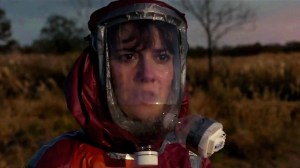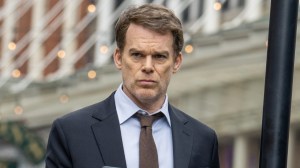With Mission: Impossible – The Final Reckoning, the Mission: Impossible saga is beginning to wind down after three decades of big screen mayhem. This adaptation of the popular 1960s CBS TV show has become the very face of Tom Cruise’s career, not to mention a vessel for stunt work that’s always upping the ante. Across eight installments (including The Final Reckoning), the Mission: Impossible movies have secured a gargantuan fan base and left a tremendous impression on the world of cinematic storytelling.
Videos by ComicBook.com
However, even given the ubiquity of these movies, that doesn’t mean every element of this franchise has become common knowledge to the general public. In fact, there are many corners of the Mission: Impossible movies that are still obscure to even the most ardent fans of these action features. Five Mission: Impossible movie facts, in particular, endure as fascinatingly lesser-known wrinkles in the history of a towering collection of action films.
1) The First Mission: Impossible’s Script Came Together Very Last Minute

Much like subsequent 21st-century blockbusters like MIB 3 or Iron Man, the very first Mission: Impossible movie didn’t exactly have its full script locked in, even with so much money on the line. Once pre-production was in full swing for this Brian De Palma directorial effort, Mission: Impossible still didn’t have a completed script. Eventually, sets and other materials constructed for concepts for action sequences guided the eventually finalized screenplay more than anything else. Interestingly, this improvised way of realizing a big-budget Tom Cruise movie mirrored how later Christopher McQuarrie-directed installments of the franchise also tended to make up big plot points during principal photography.
2) Martin Landau Rejected Returning For Mission: Impossible III

It’s incredibly easy and forgivable to forget that the Mission: Impossible property started off as a TV show. However, director J.J. Abrams (who can never resist a callback to pop culture’s past) nearly inserted a very explicit connection to the franchise’s small-screen past in Mission: Impossible III. Abrams asked Landau if he wanted to play the character Rollin Hand one more time in Mission: Impossible III, though the actor immediately shot down the offer. If the Oscar-winning actor had “accepted” this casting mission, then two very different eras of Mission: Impossible storytelling would’ve suddenly been deeply intertwined.
[RELATED – Tom Cruise Reveals One Movie Genre He Still Wants to Star In]
3) Sean Harris Did Not Want To Do Multiple Mission: Impossible Movies

Mission: Impossible- Rogue Nation’s big baddie was terrorist Solomon Lane, played with assured menace by Sean Harris. Harris was cast in the role just as it was becoming increasingly common for actors to sign six-film contracts to appear in blockbuster films. Harris was not angling for that kind of multi-feature work. Director Christopher McQuarrie recalled while promoting Rogue Nation that Harris insisted Lane die in the film because he didn’t want to appear in countless Mission: Impossible installments. Lane survived Rogue Nation and its sequel, Fallout, but he got his wish somewhat. After his second Solomon Lane appearance, Harris has been M.I.A. from this franchise.
4) Joe Kraemer’s Rogue Nation Score Was Excitingly Rooted in the Past

It’s no surprise that Joe Kraemer’s Mission: Impossible – Rogue Nation score is today considered the best in the entire franchise, especially compared to the more generic compositions conjured up by director Christopher McQuarrie’s subsequent go-to Mission: Impossible composer Lorne Balfe. What is excitingly surprising is how Kraemer subtly rooted all of his tracks in the era which the original Mission: Impossible TV show debuted in. All his compositions only utilized instruments that composers could’ve used in the mid-1960s. This gave his tracks a unique sound compared to many modern blockbuster scores, and inspired incredibly inventive instrumentation throughout Rogue Nation’s propulsive runtime.
5) Ghost Protocol Almost Ditched the Mission: Impossible Name

It’s hard to imagine any major movie studio trying to avoid hyping up Tom Cruise’s past considering this guy is now known as “the president of movies.” Promotional stunts for Top Gun: Maverick and the two most recent Mission: Impossible entries were all about Cruise doing death-defying stunts. However, back in 2010, the world was much different for Cruise. After he jumped on Oprah’s couch in 2005 and Mission: Impossible III came in under expectations at the box office, Cruise’s profile was not in an ideal position. As Mission: Impossible- Ghost Protocol was ramping up pre-production, Knight & Day tanked at the box office, further hindering Cruise’s bankability.
Thus, it wasn’t shocking in August 2010 when Variety reported that Paramount Pictures was considering releasing Ghost Protocol without the Mission: Impossible brand name in the title. This way, the saga could potentially invite in new fans and not immediately recall for moviegoers Cruise’s weird recent past. However, that plan never came to fruition and instead, Ghost Protocol became a massive hit with the Mission: Impossible label slapped all over its marketing. The Tom Cruise resurgence had begun.
Mission: Impossible: Ghost Protocol is now streaming on Prime Video and Paramount+.








